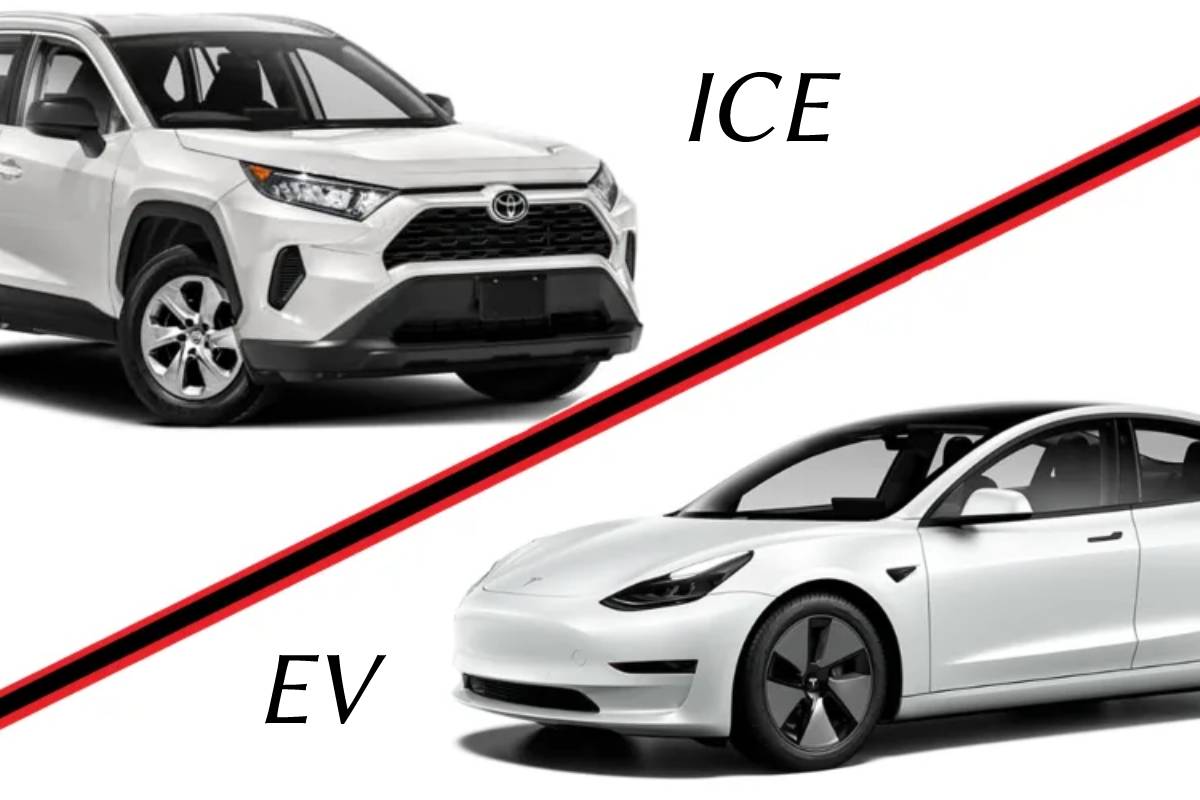
The car industry has undergone a historic change with electric drivetrains. It implies that many ICE automobile parts are no longer applicable to electric cars. Some of the components have similar roles, while others have unique ones.
The high-voltage battery, the only essential component found exclusively in electric vehicles, will serve as our starting point. The high-voltage battery is comparable to an ICE car’s fuel tank. It is in charge of giving the electric motor the necessary electric energy.
Another innovative component of an electric car is the electric motor. The electric motor is in charge of transforming electrical energy into mechanical energy to move the vehicle. The high-voltage battery uses direct current (DC), whereas the electric motor uses three-phase AC (alternating current).
Between those two components, we now require an “interpreter.” The inverter, a piece of power electronics, fills this function.
For the electric motor during propulsion, the power electronics are in charge of converting the DC from the high-voltage battery to three-phase AC. In contrast, this occurs during regenerative braking.
The inverter’s efficiency dramatically influences the overall effectiveness of the electric car. However, an electric car has more than one “interpreter” besides the power electronics. The second connection device is the onboard charger. To charge the battery, it transforms the grid’s AC single-phase or three-phase power to DC. The onboard charger is disregarded when high-power DC charging is used.
Heating the EV’s interior with PTC heaters (Positive Temperature Coefficient) and heat pumps is another significantly unusual feature. Due to the low thermal efficiency of their engines, ICE vehicles have a lot of thermal energy that is lost. However, it is simple to use some of it to heat the interiors of vehicles.
On the other hand, this is not feasible in electric automobiles. The drivetrain’s high efficiency means that the amount of thermal energy generated is minimal. We require various equipment to generate the necessary heat for the cabin and the batteries.
Difference between EV and ICE
ICE and electric cars use compressors for air conditioners, but their methods for powering them are very different. A battery runs the high-voltage air conditioner compressor in an electric vehicle. However, in an ICE vehicle, this is a mechanical component that receives power from the engine’s crankshaft.
Because the air conditioning compressor uses some of the engine’s power, turning on the air conditioning in an ICE automobile may cause a little power loss. With a few notable exceptions, both types of cars have gearboxes, but the one in an electric car is much simpler because it typically has just one speed. Nine-speed automatic transmissions are already becoming more common in contemporary ICE passenger automobiles.
There are differences in how braking systems are conceptualized between ICE and electric cars. We use the term Regenerative braking to describe how, in most electric cars, when the driver presses the brake pedal, the electric motor acts as a generator, doing the initial braking while recharging the battery.
There is a point at which the standard hydraulic system of the car applies the brakes if the driver needs greater stopping power. Electric vehicles rarely, if ever, use the traditional braking system, extending the useful life of the brake discs and pads. However, the hydraulic brakes are activated every time the driver applies the brakes in an ICE vehicle.
The ease of the motor itself is another distinction between cars that run on gasoline and those that run on electricity. The electric motor has two working parts and requires little maintenance. The internal combustion engine, in comparison, contains several moving components; a standard 4-cylinder engine has at least 40. Changing the oil and gasoline filters regularly, maintaining the timing chain or belt, and running every auxiliary component with poly-v belts, are all necessary.
Similarities
Everything that has to do with the suspension, wheels, and tires is comparable between ICE and electric cars. Both types of cars start with identical architectures for the suspension.
The suspension of electric vehicles built on ICE platforms is frequently the same as that of their ICE stablemates. We use the most fully independent suspension designs, including multi-link, double wishbone, and McPherson struts, in electric vehicles built on specialized EV platforms.
Naturally, shock absorbers and springs are modified in electric vehicles to handle the added weight.
Both ICE and electric tires share a similar design. Both types of vehicles can use tires that have low rolling resistance properties. Due to the “aero” design that the majority of electric cars utilize to reduce aerodynamic drag, the wheels between ICE and electric cars used to be different, but no more. Modern ICE types are frequently fitted with “aero” wheels, which also lessen turbulent flow around the wheels. A car’s overall drag is reduced by one-third thanks to the ostensibly minor design adjustment.
Finally, both ICE and EV steering systems are comparable. Both of them are built with electromechanical equipment and the appropriate control panels. They also require Electromechanical systems because they can support sophisticated driver-aid systems, like autonomous parking.


